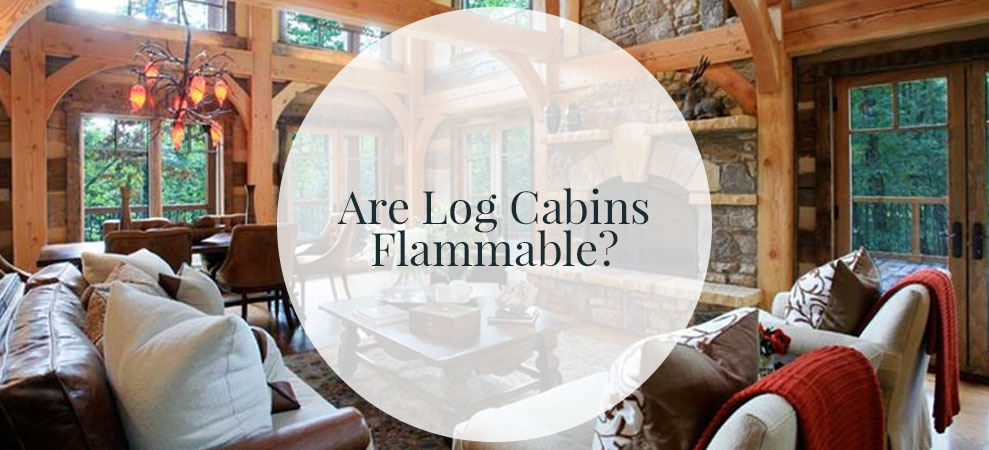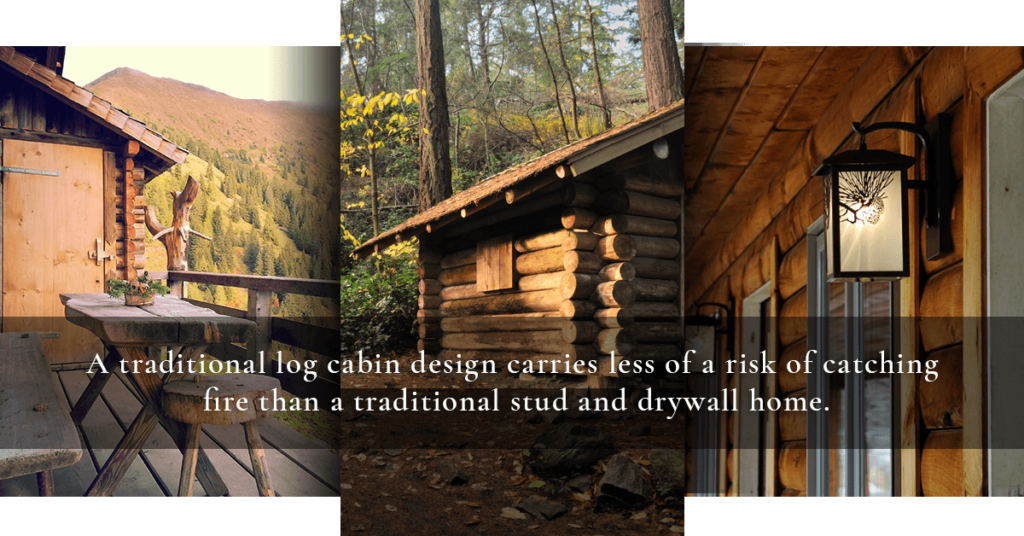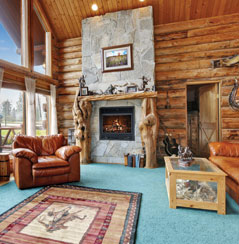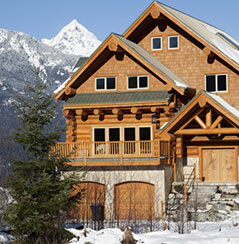
It’s a common question, and a major concern for log cabin builders: Are log cabins flammable? Well, yes. But not as much as you might think. A traditional log cabin design carries less of a risk of catching fire than a traditional stud and drywall home. Let’s take a look at why.

 Log Cabin Designs
Log Cabin Designs
It makes sense that people assume log cabins are susceptible to fire. After all, a log cabin is a massive pile of wood… and there’s certainly one thing that you learn in boy scouts: Wood is the best natural source of flammable material in the world, and it’s excellent for preparing marshmallows. However, wood doesn’t ignite immediately; this is especially true for bigger logs. Think about how you build a fire. You start with a bit of newspaper or some shredded wood scraps. Then you add sticks or thin splinters of wood. Then, once the fire’s alight, you can add a bigger log or two. You start with material that has a huge amount of surface area, and then you work up to a log that has very little surface area. It takes effort to get a full log ignited, and that log will burn very slowly compared to the scraps, sticks, and splinters you’d used to start the fire. The same is true of the logs utilized throughout a log cabin design. You’d have to hold a flame to any log in a log cabin for quite a while to get it to ignite and stay lit. That’s why the Log Home Builders Association states that “Log homes are actually safer than stick frame construction when it comes to house fires.”
Stud & Drywall Home Designs
The same article notes that there’s an important design difference between log cabins and stud and drywall homes (or “stick frame construction” as the article denotes): Stud and drywall homes have cut timber. Split timber is more flammable than whole logs. Plus, dimensional lumber (i.e. 2 by 4s) have more surface area by volume than round logs (Remember that a sphere has less surface area than a cube of the same volume and a circle has less circumference than the perimeter of a rectangle of the same area. Since full logs have circular cross-sections and 2 by 4s have rectangular cross sections, 2 by 4s have more surface area by volume; more surface area means more room for a flame to catch and thrive.). Due to these factors, stud and drywall homes are rated more flammable than log cabin homes. As the Log Home Builders Association puts it, “Because of the low surface area to volume ratio of large logs, they’re difficult to light on fire. The 2X4s that are used to build a conventional home are much smaller and much more exposed when near a flame, making them easier to light.”
 An Additional Benefit
An Additional Benefit
There’s an added benefit to the log cabin design. Log cabins can be reclaimed after some minor fires. Since it’s unlikely that a log will burn all of the way through, logs can be reclaimed by pressure washing the wood, sanding, and refinishing the surface. When a fire strikes a stud and drywall home, you’ll probably have to demolish it and start from scratch.
So if you’re on the fence about building a home with a log cabin design due to a fear of fire, consider the facts: Log cabins are safer than stud and drywall homes, and they’re more apt for reclamation should a fire occur. If you’re looking for the best home designs, you can count on Winterwoods Homes. We provide log cabin and timber frame home designs.
